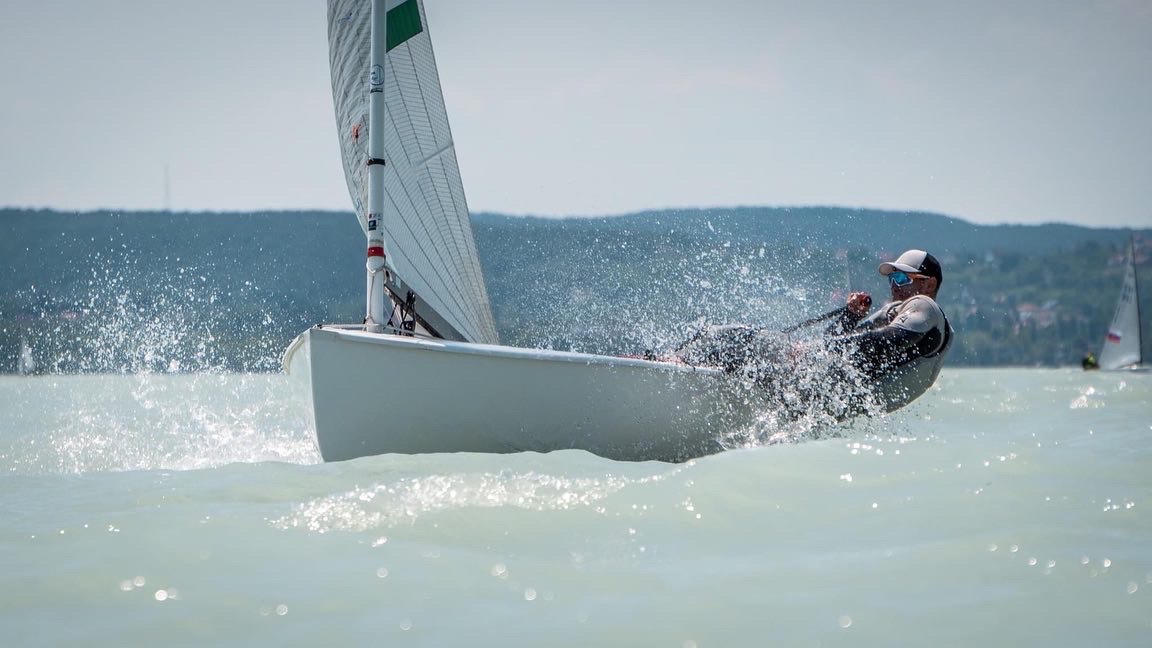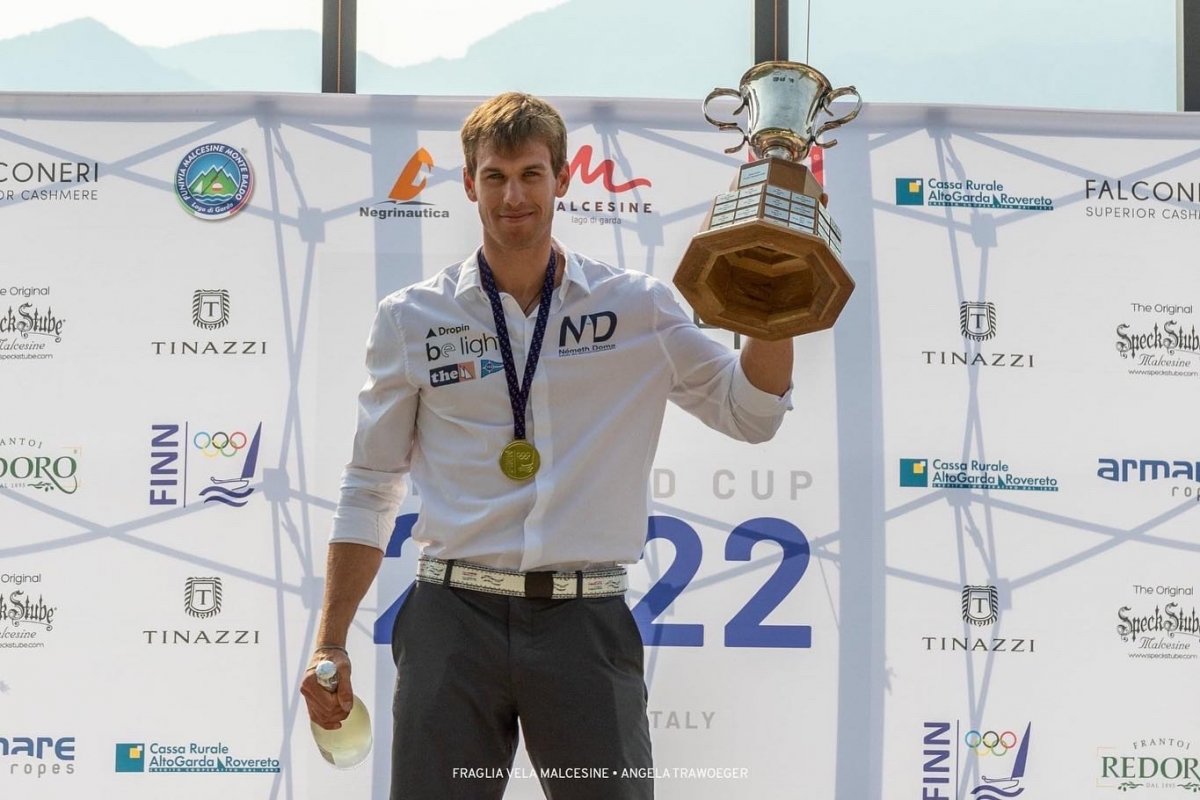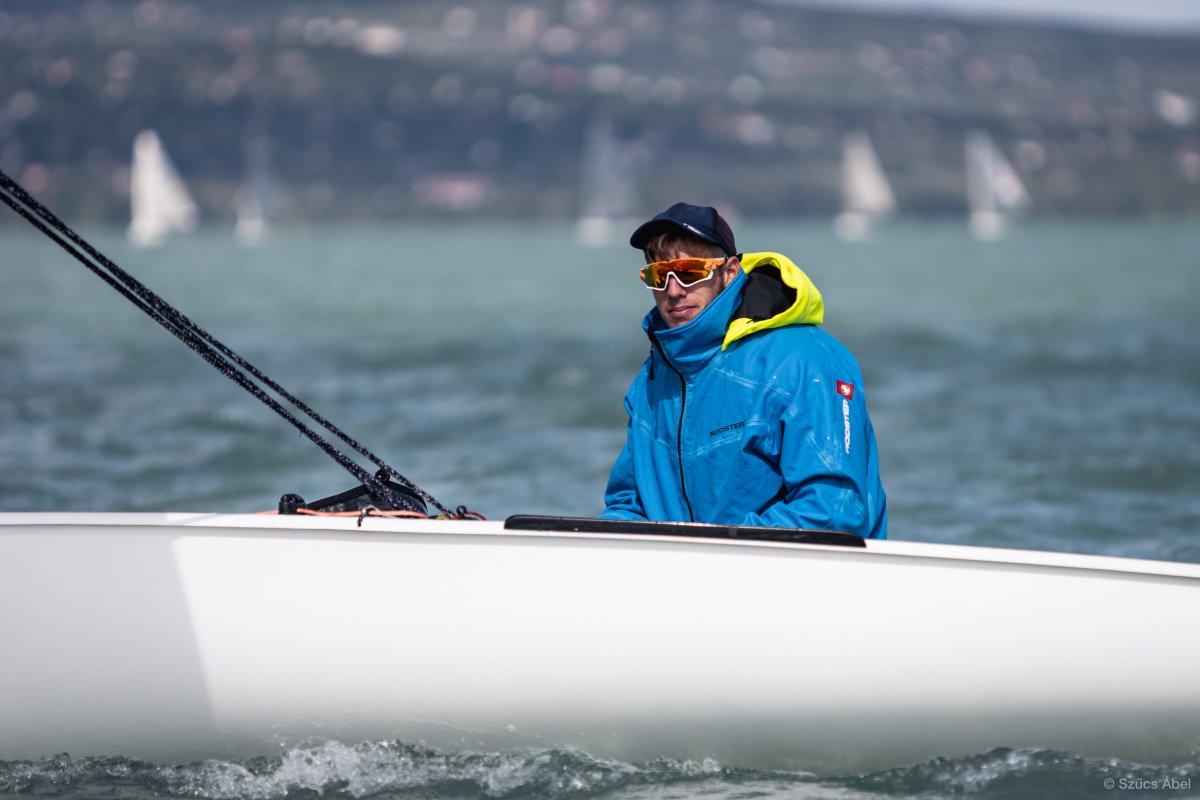Student from the University of Pécs at the Finn Gold Cup
2023
Jan
27
The Finn Gold Cup will be held in Miami, USA, in January 2023. Sixty sailors from 14 countries will race against the sea and each other, including Domonkos Németh, a student of the Faculty of Health Sciences, University of Pécs (PTE). At 198 cm tall, the 20-year-old looks slim compared to the rest of the field, but he is a serious contender for the world cup and an internationally recognized talent in the sport of sailing. The competition starts on 27 January and runs until the end of the month. We asked Domonkos Németh about the competition and his relationship with the sport he loves.

You are a student at the University of Pécs. What are you studying?
I am studying physiotherapy at the Faculty of Health Sciences, University of Pécs. I was interested in this field because of sailing and have been interested in it right from the start. I wanted to choose a major that was related to sports.
Why did you start sailing, and why the Finn dinghy?
I am from Budapest, but my grandparents had a small wooden house in Alsóörs, on the shore of Lake Balaton. I spent all my childhood summers at the lake, and since my dad and my mom were sailing, and still sail to this day, it was normal for me to sail. I started when I was six. I always raced in single-seater boats, first in Laser
- but I outgrew that; I could not fit in it anymore, so I did the Finn dinghy.
You are considered a great talent by the international and Hungarian sailing sport. What are your most ambitious goals?
I did not believe for a long time that I had any talent in this sport, and I think one of my driving forces is that I do not think what I do is enough. I say this without any pressure from home in terms of results! But I was always taller than my peers, I was generally looked at as older, and I wanted to live up to the image that was created of me based on that. So, I did things at fourteen that other people did much later.
I had a big dream of competing in the Paris Olympics, but unfortunately, they took the Finn out of the Olympic sports in Tokyo.
Since I could not make it in Laser and I could not compete in the Finn, I even thought about entering hydrofoil surfing and started practicing. But for me, it is like switching to foot-tennis as a football player - the two sports are similar, but very different.

Fotó: Angela Trawoeger
So you cannot compete in sailing at the Olympics simply because you are tall?
I read that the decision of the Olympic Committee was based on the fact that women would not be able to compete in the Finn.
Women sailors who are two metres tall and weigh a hundred kilos are much rarer.
Did you take your boat with you to Miami?
It is not easy to transport a boat! We take my boat by car with a trailer wherever possible. I have always raced in Europe; if I remember correctly, we could drive to any race venue in two days at most. I never thought I would make it to a US race, but it raises dilemmas when you have to change continents. A new boat builder has offered to build a hull in Miami. Luckily, I was able to work that out so I could race with my own mast and sail. Now I am just not happy, because I do not know this boat, and I do not feel good because it is not made for me. I have put together a list of ways to change this; I plan to use it to approach the owner and discuss what I can implement with him. During the race, you are adjusting the mast tilt angle to change the sail’s shape - I have these on my boat, and I want to have these adjustments on this American boat. But at least my sail and mast suit my style.
You have achieved many good results; which medal do you consider your best so far?
There was one European Championship where the Olympic field at the time competed, with the top 25 in the world. I came 31st, I was not nearly as good then as I am now, but I beat people who taught me. I would also like to mention last year's World Championships, which meant a lot to me: I came third, but I did not have much time to prepare, and the competition was in the middle of my exam period. I was under stress because I knew I would not be able to rest after the competition. After all, I had to perform in the exams. I think I did pretty well.
You are considered a big contender for the World Championships. Who do you look out for, and whom do you think are your biggest opponents?
Among the current contenders, Ed Wright is very talented! He is in his mid-forties; he is at the top in terms of experience and physicality. He won the World Cup in 2010. I am curious to meet him! That is why it is important to see what it will be like to race in the boat you are in now because if it is not comfortable, you cannot look out for the others.
The current European champion Miguel Fernandez Vasco, the overall leader of the Finn class, will also start. He finished sixth at the Worlds, where I finished third. I am curious to see his performance as well. Otherwise, I would like to have a variety of winds, so that we have to prove ourselves in every situation and win the cleanest way.

How are you preparing for the race?
Unfortunately, I have not sailed much lately, so my technique and experience are what keep me going. Physically I am always fit; I make sure I train myself properly. Before races, I strengthen the specific muscles I will need most for the competition with more and more weight training. At the competition venue, I only do push-up workouts. Mentally, I also use visualizations, but the university helps a lot: when you have to learn something, it enables you to remember the knowledge you've learned before. My biggest weapon is my experience. I also need talent, but you can never go around hard work, and to get there in my head, I had to grow up and mature.
The most important thing is the start. That is where it will be decided who gets the best position for the venue’s conditions. We always use wind tactics; it is not just about being in the right place. In lighter winds, it is all about your skills. But when the wind is blowing hard, it is like sprinting for a short distance while playing chess in your head.
So the location outside the boat is not familiar. Could this be a double disadvantage?
The race venue is surprisingly similar to the ones I am used to: rotating, choppy winds, choppy waves (shorter waves, including short spans - ed.). It will be interesting, but I like sailing at sea, perhaps even more than on lakes - I like the waves.
For outsiders, could you please briefly summarise what a Finn dinghy sailing race is like?
There is a starting line that increases according to the number of boats. A buoy is placed in line with the wind line, 1200 metres from the start. You have to go upwind of it, go around it, and then back down as fast as possible. At the bottom of the course, there is a pair of buoys called the gate, one of which - whichever you choose - you must go around. Then sail to the first buoy again, then head for one of the gate buoys - after which there is a separate run-in to get through. A race lasts usually about an hour; there will be two races a day over five days, so we will have ten races in total.
Follow the daily highlights of the Finn Gold Cup »
Written by: Éva Harka
- Log in to post comments
University of Pécs | Chancellery | IT Directorate | Portal group - 2020.






















